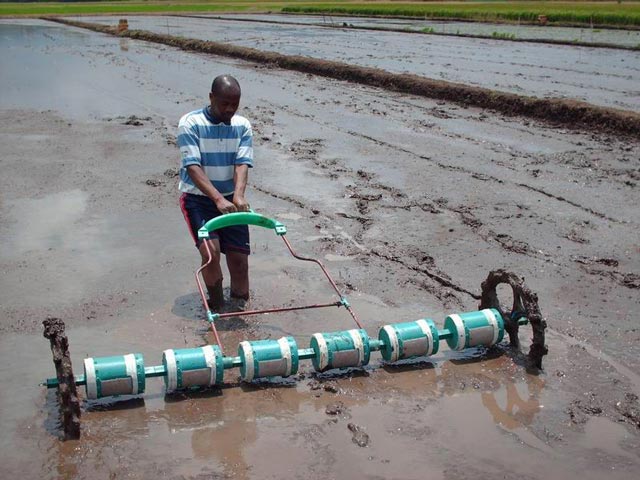Seeder clogged
 What it does
What it does
When the drill or drum-seeder used is clogged, no seeds can come out; thus, no plants will grow. Sometimes there are plants missing in rows, or there no plants emerging in an entire area.
Why and where it occurs
Crops can be drill-seeded (using machines) on dry or wet fields. Pre-germinated seed is typically used when wet direct seeding. Clogging is often a problem in poorly designed seeder "shoes" and may be a problem if the soil is "sticky".
How to identify
Check the field for the following:
- plants missing in rows
- for mechanically planted fields, a blocked (or clogged) seeder results in no seeds dropped and thus no plants
Observable field pattern shows no seeds nor plants emerging in the entire or portion of the rows affected, while plants in adjacent seeded rows emerge.
Fields can also have missing plants or hills when birds or rats feed on the seeds. To confirm the cause of problem, check or ask farmer if the field was mechanically direct seeded in rows or not.
Why is it important
A good plant stand lays the foundation for good yields. The absence of a good stand automatically lowers yield potential. Economic costs can be direct in terms of yield lost due to a poor crop stand with too few plants.
How to manage
- For good crop establishment, ensure proper flow of seeds, check seed drop during planting.
- After planting, ensure good water management and well-leveled water, especially for direct-seeded fields.
- Ensure appropriate seed rate with even distribution of seed.
- Crop stand should be in the order of 100−200 plants per m2, use seed rates between 40−100 kg per ha if other factors (e.g., pest problems and seedbed preparation) are not problematic.
Contributors: J Rickman and M Bell